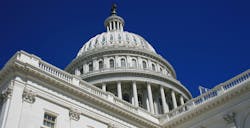Laboratory developed test services (LDTs) have been at the forefront of innovation in personalized and precision medicine, particularly since the dawn of molecular and genomic diagnostics in the early 1990s. Tests that distinguish cancers, provide prenatal screening during pregnancy, and identify treatment-resistant genes in infectious bacteria and viruses—all are possible through the tremendous innovation in LDTs.
As we know all too well, however, LDT innovation and the clinical laboratories engaging in diagnostic discoveries have existed under a cloud of regulatory uncertainty. Ambiguity around how laboratories would be regulated and whether they would inappropriately and unnecessarily be deemed “medical device manufacturers” set in motion the need to further define the unique diagnostic and clinical laboratory role.
The American Clinical Laboratory Association (ACLA), along with other industry organizations and lab leaders, has long opposed grouping LDTs with medical devices. Over the last two years, ACLA has worked purposefully with policymakers and other stakeholders to reach a legislative pathway for regulation that ensures ongoing diagnostic innovation and patient access to the latest science. The goal of this effort is to bridge the divide between stakeholders with divergent perspectives and deliberately shape a new regulatory framework that allows clinical laboratory innovation to continue to thrive deep into the twenty-first century. It is only through strengthening the regulatory structure for LDTs and recognizing their unique diagnostic role in healthcare that we can ensure patients receive the most reliable diagnostic services now and well into the future.
Any reformed and modernized framework must recognize laboratory diagnostics as distinct from traditional therapeutic products and, thereby, have diagnostics subject to a standard focused on validity, accuracy, and reliability. Further, a new framework must be prospective and “grandfather” existing test services. Many LDTs have become the gold standard in clinical protocols, whereas others may be the only test available for certain conditions, such as rare diseases. Patients should not be put at risk of losing access to these valuable diagnostic tools. Finally, reform should recognize the distinction between laboratory operations and manufacturing, to avoid duplicative regulation.
Both the legislative and executive branches of the federal government will be involved in the long-term resolution of the LDT question. Congress has been closely examining diagnostic reform. After several hearings held in both the U.S. House of Representatives and the Senate and ongoing communications with clinical laboratory leaders, patient groups, academic medical centers, and other stakeholders, the latest discussion document to emerge is the Diagnostic Accuracy and Innovation Act (DAIA), drafted in March by Representatives Larry Bucshon, MD, (R-IN) and Diana DeGette (D-CO). The DAIA discussion draft contemplates many principles important to clinical laboratories, including grandfathering and a diagnostic-distinct approach.
ACLA has been actively engaged with Reps. Bucshon and DeGette, including via formal comments.1 The discussion draft is a work in progress. ACLA’s comments have called for strong grandfathering provisions for existing tests while protecting the public health if there is actual evidence of potential harm to patients. In addition, oversight must avoid duplicative requirements and further leverage advances since the laws were last updated, such as electronically available labeling. ACLA has also stressed that any reformed framework should be shaped and led by individuals with clinical laboratory experience, from both the perspectives of innovation and performing laboratory testing accurately and reliably.
Leaders in Congress, such as Reps. Bucshon and DeGette, have provided a starting point for a reform discussion that recognizes diagnostics and laboratories as distinct. Their work is a step forward in removing the cloud of regulatory uncertainty and in fostering a transparent and open dialogue for reform.
In terms of the executive branch, the U. S. Food and Drug Administration (FDA) is under new leadership, with Scott Gottlieb, MD, having been sworn in as the new FDA Commissioner. In public writings and statements in years past, Dr. Gottlieb has expressed an understanding of the value of LDTs and clinical laboratories, in addition to the risk of onerous regulation. It remains to be seen how the new FDA leadership may approach diagnostics. Yet, the first-time approval in April by the FDA of certain direct-to-consumer tests for genetic risk information demonstrates that the agency remains active in this space. Further, in written responses to Congress during and after his confirmation, Dr. Gottlieb and the FDA have committed to working with Congress on reform of the LDT regulatory framework.
Every day, patients are searching and waiting for information and answers about their disease or condition. Often laboratory diagnostics and the healthcare providers that perform these services are providing patients with valuable clinical diagnostic data and information through laboratory results and interpretations. These diagnostic services can help patients navigate their health or treatment journey. Sometimes, a treatment or path for prevention is known; other times, the diagnostic is the important first step toward knowledge and, potentially, the next undiscovered cure.
Change can be arduous and difficult. A successful regulatory reform effort, however, will provide laboratories with the operational certainty to innovate, and patients will have access to the wonders of diagnostic innovation for decades to come.
REFERENCE
- ACLA comments on March 21, 2017, discussion draft of the Diagnostic Accuracy and Innovation Act. http://www.acla.com/acla-comments-on-march-21-2017-discussion-draft-of-the-diagnostic-accuracy-and-innovation-act/.
Julie Khani serves as president of the American Clinical Laboratory Association.

